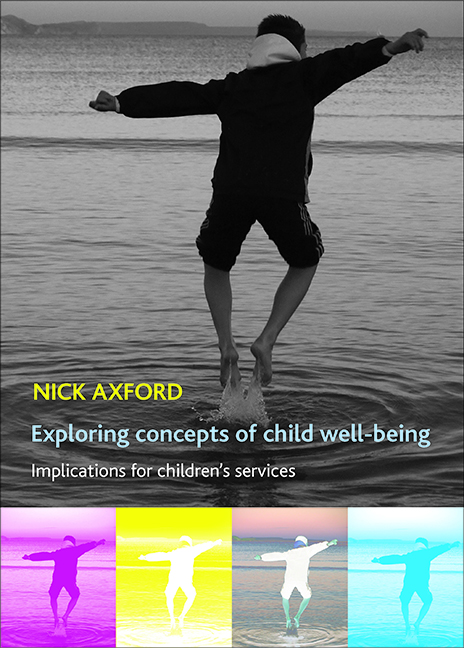nine - Relationships between the conditions
Published online by Cambridge University Press: 19 January 2022
Summary
Two-way relationships between the conditions
This chapter continues to use the data analysed in Chapter Eight to examine relationships between the five conditions (or types of ill-being). The starting point is the proposition that the five conditions would be significantly and positively correlated. The analysis shows that this is only partially the case. In the N=234 sample, four of the associations between the conditions are highly significant (p ˂0.01), but all are weak (phi coefficient ˂0.3) apart from that between need and quality of life (QoL) (0.470) (Table 9.1). These findings are surprising in two respects. One is that some pairs of conditions are not positively correlated. For example, the relationship between poor living standards and various health and behaviour difficulties would have suggested that need and poverty are related. The other slight surprise is that none of the conditions are strongly correlated.
The weakness of these correlations is reflected in the fact that when relative risk ratios (RRRs) were calculated, only 10 of the 20 scores were significant (p ˂0.05) (Table 9.2). Of these, most were relatively small; scoring positively against one concept did not render a child much more likely to be affected by a second condition. For example, a child whose rights were judged to be violated was approximately 1.4 times more likely to be in poverty than a child whose rights were intact (RRR1=1.354, p ˂0.05). There were exceptions to the rule: to name one, a child in need was over six times more likely to have a poor QoL than one with good health and development (RRR1=6.066, p ˂0.05).
A closer analysis of overlap between the conditions reveals why this pattern arises. Although overlap exists between all five conditions, the most is betweenviolated rights and poverty (68 children or 30% of the sample) (Table 9.3). This indicates that significant numbers of children have condition X but not condition Y. For instance, 49% (44/87) of children in need were judged to have intact rights, and 54% (51/95) of those with violated rights were not considered to be in need (see Appendix D for all two-by-two tables). A more sophisticated understanding of how the conditions are related can be gained by examining the pattern of five-way combinations.
- Type
- Chapter
- Information
- Exploring Concepts of Child Well-beingImplications for Children's Services, pp. 131 - 138Publisher: Bristol University PressPrint publication year: 2008



